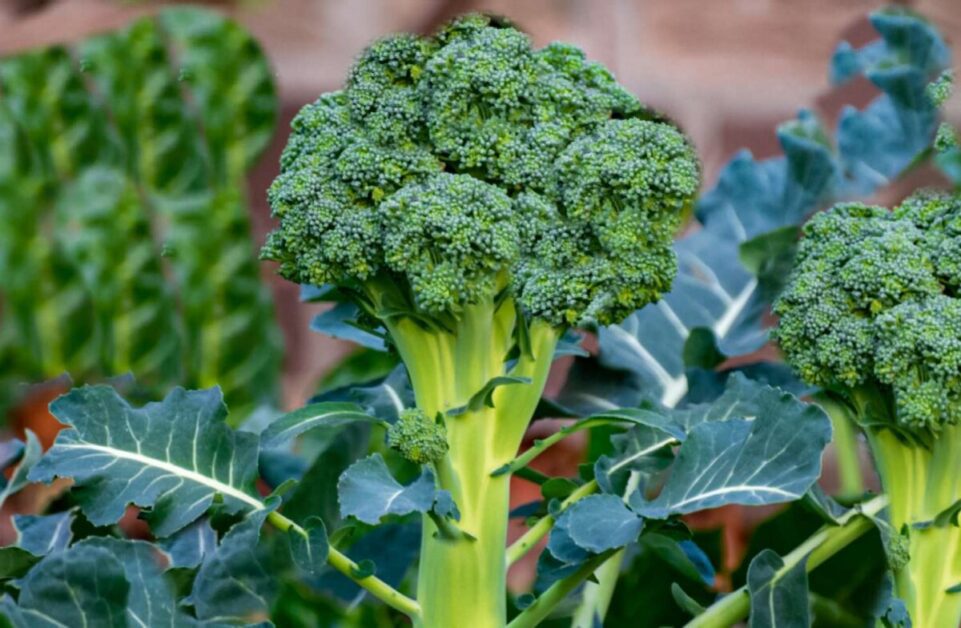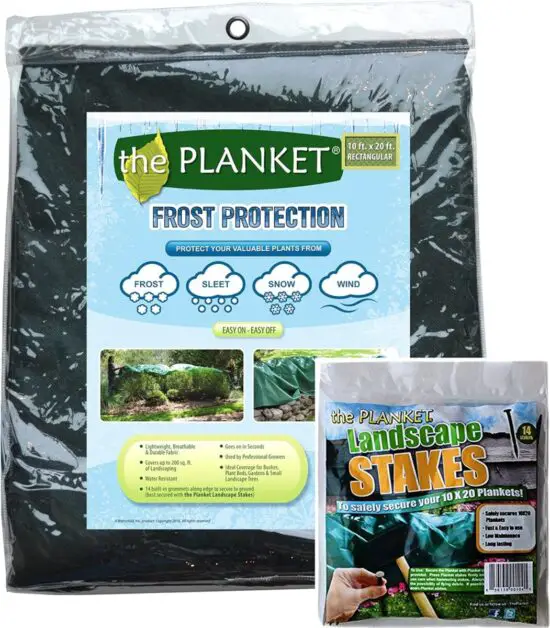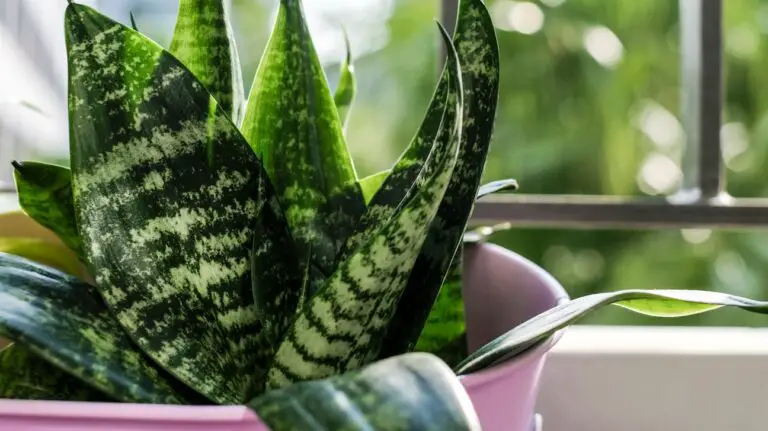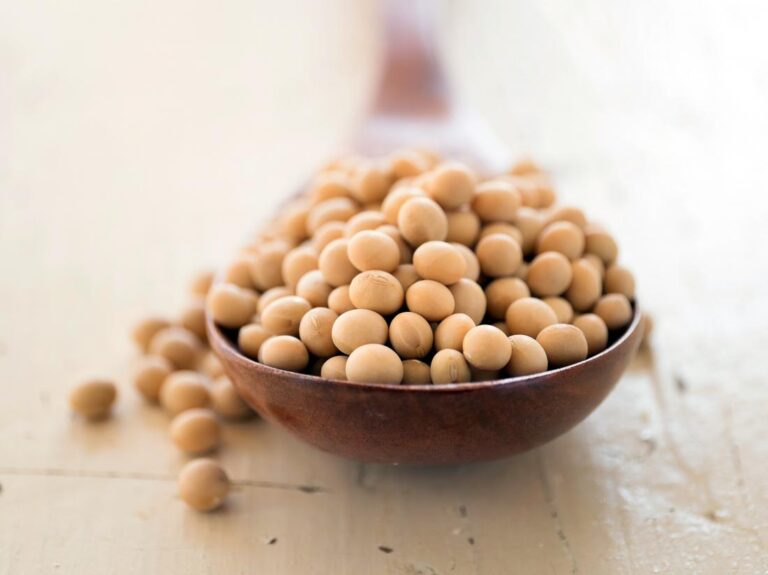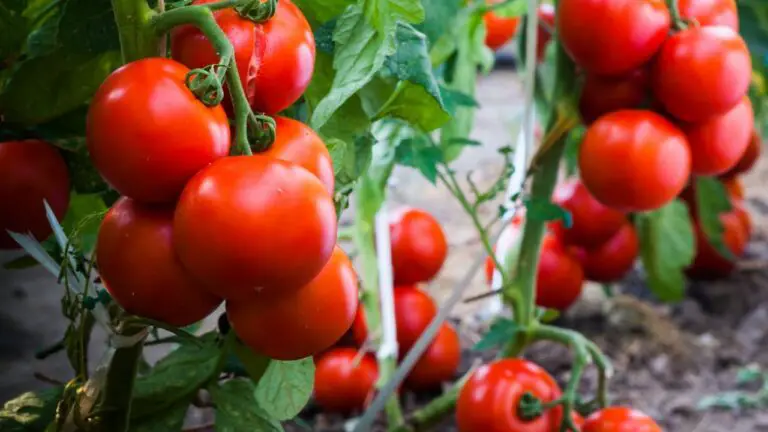Growing Broccoli: A Guide to Tasty “Trees”
Ever wondered how to grow your own crunchy, nutritious “trees” right in your backyard? Broccoli, often dubbed as the “tree of life,” is not just a superfood but also a delight to cultivate. From seed to harvest, this guide will walk you through the steps to grow your own bountiful broccoli patch. Discover the secrets to nurturing these green giants and enjoy a harvest of freshness right at your fingertips. Whether you’re a seasoned gardener or a newbie with a green thumb, this guide will equip you with the knowledge and skills to cultivate your very own tasty “trees.” Let’s dive in and unlock the secrets of growing broccoli!
Table of Contents
Importance of Broccoli in a Healthy Diet
Broccoli is often hailed as a superfood due to its numerous health benefits and high nutritional value. Incorporating broccoli into a healthy diet can have far-reaching positive effects on overall well-being.

- Nutrient-Rich Superfood: Broccoli is a powerhouse of essential nutrients like vitamin C, vital for immune support and skin health, and vitamin K, crucial for blood clotting and bone strength.
- Antioxidant Boost: Packed with antioxidants, broccoli aids in fighting off diseases and promoting overall well-being.
- Folate for Growth: Broccoli is a good source of folate, necessary for cell growth and development, making it a valuable addition to a healthy diet.
- Cancer-Fighting Properties: Compounds like sulforaphane and indole-3-carbinol in broccoli have been linked to inhibiting cancer cell growth, reducing the risk of breast, prostate, and colon cancer.
- Detoxification Support: Broccoli compounds assist in detoxifying the body and preventing the formation of harmful carcinogens, contributing to a healthier lifestyle.
In conclusion, incorporating broccoli into a healthy diet can provide a wide array of health benefits. From its high nutrient content to its cancer-fighting properties, this cruciferous vegetable is a valuable addition to any meal plan. By understanding the importance of broccoli in a healthy diet, individuals can make informed choices that contribute to their overall well-being.
Understanding the Different Varieties of Broccoli
Broccoli is a versatile and nutrient-rich vegetable that comes in various varieties, each with its own unique characteristics. Understanding the different varieties of broccoli can help gardeners choose the right type for their needs and maximize their gardening success.
The following tabel explain about the different other varieties of broccoli:
| Variety | Advantages | Disadvantages | Characteristics |
|---|---|---|---|
| Calabrese Ironman F1 | Hybrid with vigorous growth and excellent uniformity | Specific growing conditions required | High yield, uniform heads |
| Gypsy | Strong root system, well-domed and uniform heads, good heat tolerance, suitable for bunching or crown cut | More susceptible to downy mildew | Small to medium bead size, medium-sized stem |
| Lieutenant | Flavorful dark green heads, more tolerant of warm temperatures | Heads must be harvested before buds begin to swell | Solid stems, harvest at 75-80 days |
| Imperial | Best heat tolerance, dark green heads with small beads | Best suited for harvest in summer and early fall | Grows slowly in cold weather |
| Arcadia | Best cold tolerance for fall and winter production | Requires longer growing time | Rugged, vigorous plants, big plants with heavy, very firm, dark green, domed heads |
| Emerald Crown | Bright green heads tolerant to purpling, best for crown cut | Smaller plant size | Smooth, well-domed heads, good option for fall |
| Green Magic | Heat tolerant, uniform maturity, smaller plant size | Less productive than other varieties | Smooth heads, extremely uniform in maturity |
These varieties have different growing requirements, such as temperature and harvesting time, and offer varying characteristics, such as head size, color, and tolerance to heat and cold. Choosing the right variety for your specific growing conditions and needs can help ensure a successful broccoli crop.
Selecting the Right Location for Growing Broccoli
Selecting the right location for growing broccoli is crucial to ensure the success of your crop.
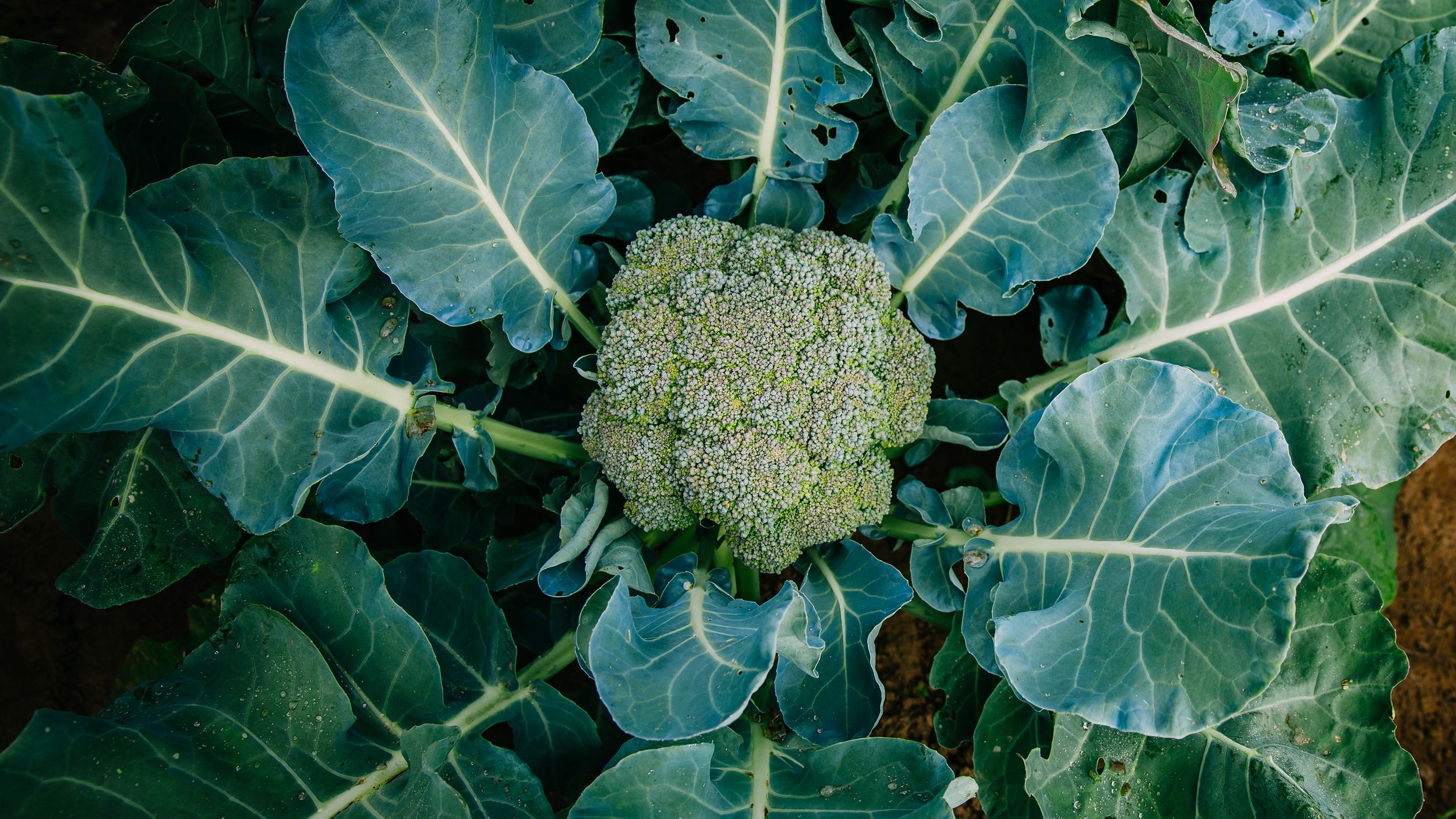
By selecting a location that provides ample sunlight, well-drained soil with the appropriate pH level, and protection from strong winds, you can create an optimal environment for growing robust and healthy broccoli plants. Stay tuned for the next section on preparing the soil for broccoli planting to learn how to further enhance the conditions for your broccoli crop.
Preparing the Soil for Broccoli Planting
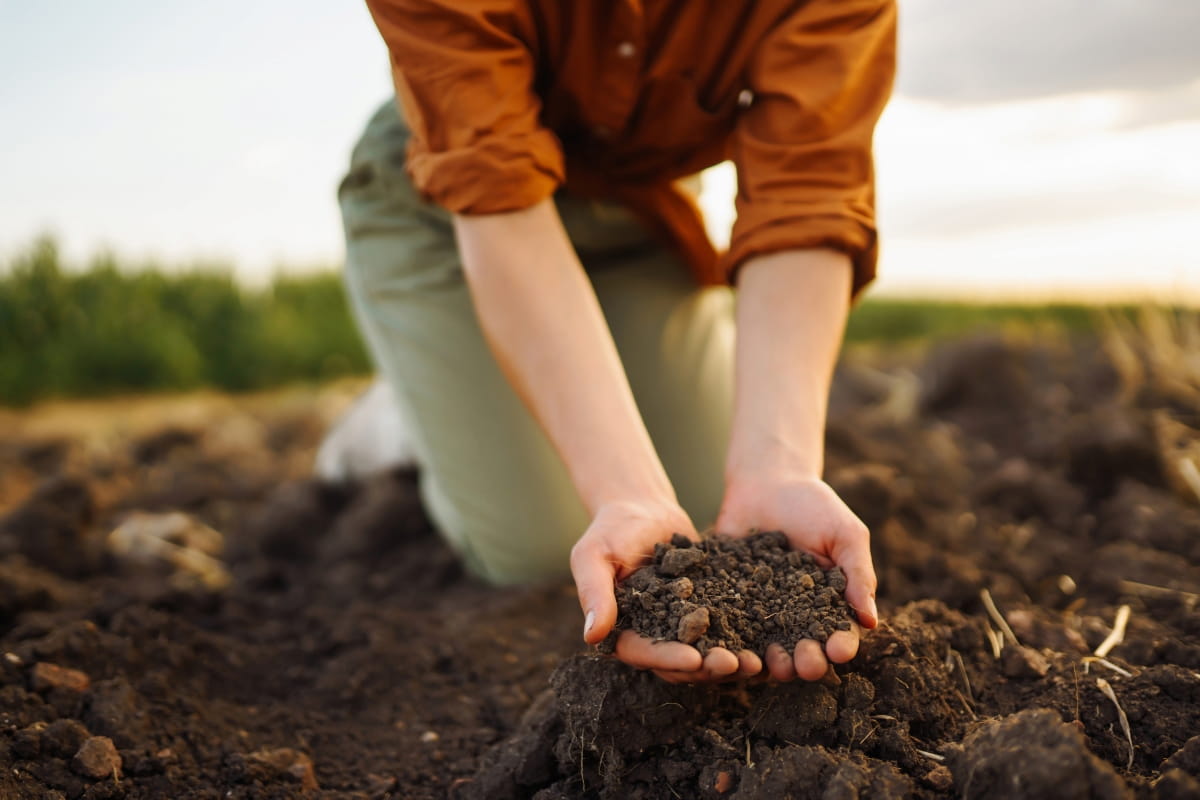
The success of your broccoli planting venture begins with preparing the soil. Broccoli plants thrive in well-draining soil that is rich in organic matter and nutrients. Before planting, it is essential to ensure that your soil is in optimal condition to provide the necessary support for healthy growth and development.
- Weed Removal: Clear the planting area of weeds and debris to prevent competition for water and nutrients.
- Soil Loosening: Use a garden fork or tiller to loosen the soil, enhancing aeration and drainage for better root growth.
- Organic Matter Addition: Amend the soil with compost or well-rotted manure to enrich it with essential nutrients.
- Even Distribution: Ensure uniform distribution of organic matter throughout the soil for consistent nutrient availability.
- Balanced Fertilizer: Incorporate a balanced fertilizer based on soil test results to correct any deficiencies and support healthy broccoli growth.
By taking the necessary steps to prepare your soil adequately, you are setting the stage for a fruitful broccoli planting journey.
Choosing the Best Time to Plant Broccoli

Choosing the right time to plant broccoli is crucial for the success of your crop.
- Broccoli is a cool-weather vegetable thriving in temperatures of 60 to 75 degrees Fahrenheit.
- It prefers growth during spring and fall when weather conditions are mild and consistent.
- Plant broccoli 2 to 3 weeks before the last spring frost date in your area.
- This timing allows plants to establish strong root systems before summer’s warmer temperatures.
- For fall planting, start broccoli seeds indoors 6 to 8 weeks before the first expected fall frost.
- Transplant seedlings into the garden when they are 4 to 6 weeks old, after the soil has cooled down.
- Proper timing is crucial; planting too early in spring risks frost damage or bolting, while planting too late in fall may not allow sufficient time for maturity before freezing temperatures.
By understanding the best timing for planting broccoli, you can ensure optimal growth and a bountiful harvest.
Planting Broccoli Seeds or Seedlings
When it comes to planting broccoli, gardeners have the option of starting from seeds or using young seedlings. Both methods have their advantages, and the choice largely depends on the gardener’s preference and circumstances.

Advantages of planting broccoli seeds directly in the soil include:
- Wide Selection of Varieties: More options are available when growing from seeds, as not all types may be available as seedlings.
- Satisfaction and Control: Directly planting seeds allows for a sense of satisfaction and control over the entire growth process.
Disadvantages of planting broccoli seeds directly in the soil include:
- Patience and Extra Care: Growing broccoli from seeds requires patience and extra care, as the seeds need to be sown indoors about six to eight weeks before the last frost date in your area.
Characteristics of planting broccoli seeds directly in the soil:
- Timing: Seeds should be sown indoors about six to eight weeks before the last frost date in your area.
- Indoor Planting: Plant 3-4 broccoli seeds per pot or growing cell in a damp seed starting mix, about half an inch deep and 3 inches apart, around 4-6 weeks before the last spring frost date.
- Soil Preparation: Prepare the soil to a depth of 12-20” (30-51cm), incorporating a 2-3” (5-8 cm) layer of good garden compost or composted manure when preparing the soil.
- Transplanting: Once the seedlings have grown a few leaves and are strong enough, they can be transplanted into a well-prepared garden bed or suitable containers for further growth.
Advantages of using broccoli seedlings include:
- Head Start: Seedlings provide a head start and save time for those eager to see their plants flourish.
- Selection: Seedlings are typically obtained from nurseries or garden centers, allowing for the selection of healthy, vigorous specimens with a well-developed root system.
Disadvantages of using broccoli seedlings include:
- Limited Varieties: Not all varieties may be available as seedlings.
- Handling Care: When transplanting seedlings, it is essential to handle them carefully to avoid damaging the roots or stems.
Characteristics of using broccoli seedlings:
- Timing: Seedlings can be directly planted in the garden after the last frost passes, ensuring a faster start to the growing season.
- Selection: Choose healthy, vigorous seedlings with a well-developed root system.
- Handling: Handle seedlings carefully during transplanting to avoid damaging the roots or stems.
- Establishment: With proper care, the seedlings will soon establish themselves in the soil and continue to grow into mature broccoli plants.
Providing Adequate Water and Nutrients for Broccoli
Properly providing adequate water and nutrients is essential for the healthy growth and development of broccoli plants. Broccoli requires consistent watering to maintain optimal soil moisture levels. Insufficient water can lead to stunted growth and underdeveloped heads, while overwatering can result in root rot and other fungal diseases.

- Use drip irrigation or a soaker hose system to water broccoli plants.
- These methods deliver water directly to the base of the plants, reducing water waste and minimizing foliage diseases.
- Aim to provide broccoli plants with 1 to 1.5 inches of water per week, considering the rainfall in your area.
- Broccoli plants require a well-balanced supply of nutrients to thrive.
- Primary macronutrients needed include nitrogen, phosphorus, and potassium.
- Incorporate organic matter like compost or well-rotted manure into the soil before planting to enhance nutrient content.
- Use a slow-release fertilizer or liquid fertilizer regularly to ensure continuous nutrient availability throughout the growing season.
- Monitor plants for signs of nutrient deficiencies, such as yellowing leaves or stunted growth.
- Adjust the fertilization regimen as needed to address any deficiencies and promote healthy growth.
By providing the right amount of water and nutrients, you can encourage strong and vibrant broccoli plants that yield delicious and nutritious heads.
After using the Melnor 50′ Soaker Hose in my garden, I found it to be extremely flexible and easy to maneuver around the base of my plants. Its ability to extend up to 50 feet provided ample coverage for my small- and medium-sized garden areas. I appreciated the simple connection with the rust-resistant end cap, which allowed me to connect multiple hoses together effortlessly.
The hose flattened easily for storage, taking up minimal space when not in use. While I experienced efficient watering with minimal waste, I did notice some durability issues mentioned in other reviews, which may need to be considered for long-term use. Overall, the Melnor Soaker Hose proved to be a convenient and effective tool for targeted watering in my garden.
- Efficient Watering: The Melnor 65159AMZ 50′ Soaker Hose delivers water right where it’s needed most, ensuring efficient watering with minimal runoff. This is particularly beneficial for plants, as it promotes healthy growth while conserving water.
- Easy Storage: The hose flattens for easy storage and takes up minimal space, making it convenient to store when not in use. Its compact design allows it to be neatly rolled up and stored in a small area, saving valuable storage space.
- Durability: Despite its lightweight and flexible design, the Melnor soaker hose is durable and long-lasting. It withstands regular use and can endure outdoor conditions, providing reliable performance over time.
- Simple Connection: The hose features a rust-resistant end cap that allows for simple connection to other hoses, enabling users to extend the length as needed. This versatility makes it suitable for covering small- to medium-sized areas effectively.
- Durability Concerns: Some users have reported durability issues with the hose, particularly regarding leaks or breakage. While the hose is designed to be durable, occasional complaints about leaks or breakage suggest potential quality control issues.
- Limited Maneuverability: Although the hose extends up to 50 feet, its design may limit maneuverability in certain landscapes or garden layouts. Users may find it challenging to navigate around obstacles or reach specific areas due to its fixed length.
- Mixed Durability Ratings: While many users praise the hose’s durability, others express dissatisfaction with its longevity. Mixed durability ratings indicate variability in product quality and suggest that individual experiences may vary.
- Price: At its current price point, some users may find the Melnor soaker hose relatively expensive compared to alternative options on the market. The higher cost may deter budget-conscious consumers from purchasing this product.
Proper Care and Maintenance of Broccoli Plants
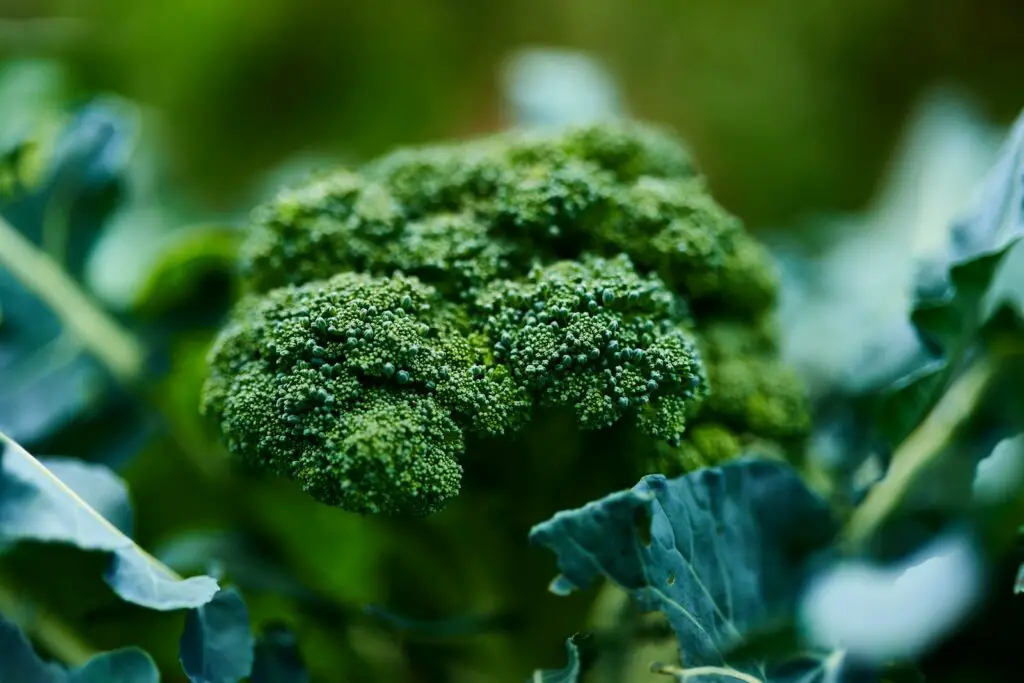
By following these care and maintenance practices, you can ensure the health and vitality of your broccoli plants, promoting vigorous growth and a bountiful harvest. Stay tuned for our next section on identifying and managing common pests and diseases in broccoli for further guidance on protecting your plants from potential threats.
Identifying and Managing Common Pests and Diseases in Broccoli
Pests and diseases can be a major concern when growing broccoli, but with proper identification and management, you can safeguard your plants and ensure a healthy harvest.
Here is a table of common pests and diseases in broccoli, including their symptoms, treatments, and effects on the plant:
| Pest/Disease | Symptoms | Treatment | Effect on Plant |
|---|---|---|---|
| Cabbage Maggot | Seeds or seedlings fail to emerge, roots tunneled, brown scars | Exclude flies with floating row covers, remove and dispose of damaged plants, apply lime or wood ashes around the base of plants | Damage to roots, reduced plant growth |
| Damping Off | Seeds rot or seedlings collapse with dark water-soaked stems | Do not plant in cold, moist soil, ensure well-drained soil, remove infected plants, keep garden free of plant debris | Fungus that lives in the soil, particularly where humidity is high |
| Cutworms | Seedlings eaten or cut off near the soil level | Place a 3-inch paper collar around the stem of the plant, keep the garden free of weeds, sprinkle wood ash around the base of plants | Gray grubs that chew stems, roots, and leaves |
| Blackleg | Irregular yellowish to brownish spots on upper leaf surfaces, grayish powder or mold on undersides | Remove and destroy infected plants, keep the garden free of plant debris, add organic matter to the planting bed, ensure well-drained soil, rotate crops | Fungal disease that causes sprouts to girdle and rot at soil level |
| Downy Mildew | Bluish-black spot on leaves and stems, grayish powder or mold on undersides | Improve air circulation, plant disease-resistant varieties, rotate crops, keep the garden free of plant debris | Fungus that causes leaves to become dull yellow, curl, and plants may die |
| Cabbage Yellows | Leaves yellow, plant stunted, small glistening white specks on roots | Remove infected plants, control leafhopper, keep the garden free of weeds, keep soil evenly moist, rotate crops, plant disease-resistant varieties | Soil fungus that infects plants, spread by leafhoppers |
| Root Cyst Nematode | Leaves are yellowish and slightly curled with small shiny specks | Rotate cabbage family crops, solarize the soil with clear plastic in mid-summer | Microscopic worm-like animal that lives in the film of water that coats soil particles |
| Aphids | Leaves have whitish or yellowish spots, leaves are deformed, plant wilts | Remove with a blast of water, use insecticidal soap solution, mulch with aluminum foil to disorient aphids | Tiny, oval, whitish-green, pink, or black pear-shaped insects that colonize on leaves |
| Harlequin Bugs or Stink Bugs | Leaves have tiny shot holes, leaves are yellowish and slightly curled with small shiny specks | Handpick and destroy bugs and egg masses, keep the garden free of crop residue and weeds where bugs breed, spray plants with Sevin, pyrethrum, and rotenone | Gray or green shield-shaped bugs about ¼-inch long that feed on fruits |
| Flea Beetles | Tiny shot holes in the leaves of seedlings | Spread diatomaceous earth around seedlings, handpick off plants, cultivate around plants often to disrupt the beetles’ life cycle | Tiny bronze or black beetles a sixteenth of an inch long that eat small holes in the leaves of seedlings and small transplants |
| Wirestem | Stems of plants become constricted and brittle at the soil line | Use certified disease-free transplants, preferably greenhouse grown | Fungus, Rhizoctonia solani, causes wirestem |
| Alternaria Leaf Spot | Small dark spots on the stem, damping-off or stunting of the plant, brown circular spots on the leaves, blackened areas on cauliflower curds and on broccoli heads | Remove and destroy all crop debris immediately after harvest, use wide plant spacing to promote drying of leaves, avoid wetting the leaves when watering, apply fungicides | Fungus, Alternaria brassicicola, occurs during warm, moist conditions |
| Black Rot | V-shaped lesions starting at the leaf margin, yellowing of leaves, blackened veins, black rot of the head | Use disease-free seed, rotate crops, avoid wounding plants, keep the garden free of plant debris, use copper-based bactericides | Bacterium, Xanthomonas campestris pathovar campestris, affects all vegetables in the crucifer family |
By being vigilant and implementing appropriate pest and disease management strategies, you can protect your broccoli plants and maximize their yield. Regular inspection, early detection, and prompt action are key to ensuring a successful and healthy broccoli crop.
Pruning and Harvesting Broccoli Heads
To ensure a successful harvest of broccoli heads, it is essential to understand the proper techniques for pruning and harvesting. Pruning plays a crucial role in encouraging the development of larger and healthier broccoli heads.

- Identify the central head, the main large head at the center of the broccoli plant.
- Harvest the central head promptly when it reaches a desirable size to encourage the growth of side shoots.
- Side shoots, or florets, will develop into smaller broccoli heads.
- Use a sharp knife or garden shears to cut the stem just above the base of the central head.
- Make a clean cut to minimize damage to the plant, avoiding tearing or pulling the head off.
- Leave several inches of the stem intact to allow for the growth of side shoots.
- Side shoots will produce more heads over the season, extending the harvest period.
- Harvest smaller heads when they reach a suitable size for consumption, cutting them off in the same manner as the central head.
By properly pruning and harvesting your broccoli heads, you can promote a bountiful and prolonged harvest. Stay tuned for our next section, where we will discuss how to extend the broccoli growing season and maximize your yield.
Extending the Broccoli Growing Season
To extend the growing season for broccoli, there are several key techniques that gardening enthusiasts can employ.
row covers
One method is to utilize row covers or cold frames, which act as protective barriers and maintain a warmer environment around the plants. These covers can be used in the early spring and late fall when temperatures tend to drop, allowing the broccoli to thrive for a longer period. Additionally, utilizing a greenhouse can provide an even more controlled environment, allowing for year-round cultivation of this nutritious vegetable.
succession planting
Another technique to extend the growing season is succession planting. This involves planting broccoli at different intervals, ensuring a continuous harvest throughout the season. By staggering the planting dates, gardeners can ensure a steady supply of fresh broccoli, extending the enjoyment of this versatile and healthy vegetable.
pruning
Additionally, pruning the plants regularly and removing any flowers that develop can prevent the formation of seeds and prolong the vegetative growth phase, further extending the growing season. By implementing these strategies, gardening enthusiasts can enjoy an abundant harvest of broccoli throughout the year, savoring its numerous nutritional benefits and culinary possibilities.
I recently used the Planket Plant Protection Landscape Stakes to protect my garden from a late freeze in the south. These stakes were easy to use and provided effective protection for my sensitive vegetation. I used them with frost blankets and row covers to create a barrier between my plants and the freezing weather. The stakes were sturdy and held the blankets and covers in place, even in windy conditions.
I was impressed with the added degree of temperature protection these stakes provided, and I noticed that my plants were less damaged than those of my neighbors who did not use them. Overall, I highly recommend the Planket Plant Protection Landscape Stakes for any gardener looking to protect their plants from freezing weather and late frosts.
✅ Size: With dimensions of 10 feet by 20 feet, this cover can efficiently protect up to 200 square feet of plants, making it suitable for both small and large garden areas.
✅ Durability: Made of lightweight yet durable polypropylene (PP) material, the Planket is resilient enough to withstand outdoor elements while still allowing plants to breathe.
✅ Easy Installation: The cover features 14 built-in grommets along the edge, which can be secured to the ground using the included Planket Landscape Stakes. Its straightforward setup allows for quick deployment, saving time and effort.
✅ Versatility: Whether it’s protecting delicate seedlings in spring or shielding mature plants in fall, the Planket offers year-round versatility for gardeners.
✅ Compact Storage: After use, the cover conveniently folds up for compact storage, minimizing clutter in sheds or garages until needed again.
✅ Positive Customer Reviews: Many customers have praised the Planket for its effectiveness, ease of use, and value, making it a trusted choice among gardeners seeking reliable plant protection solutions.
❌ Fragility: A few customers have noted that the material can be fragile, with reports of tearing or ripping, particularly in harsh winter climates. This fragility may impact the cover’s longevity and durability over time.
❌ Price: Some users may find the initial cost of the Planket and additional landscape stakes relatively high compared to alternative frost protection methods, potentially affecting its perceived value for budget-conscious gardeners.
❌ Limited Color Options: The Planket is only available in dark green, which may not suit everyone’s aesthetic preferences or blend well with all garden designs.
❌ Potential Size Limitations: While the 10′ x 20′ size is suitable for many garden setups, those with larger areas to cover may find the need for multiple covers, adding to the overall cost and setup complexity.
Storing and Preserving Broccoli for Later Use
To ensure that you can enjoy the delicious taste and health benefits of broccoli even when it’s no longer in season, proper storage and preservation techniques are crucial. Storing broccoli for later use requires a few simple steps to maintain its freshness and nutritional value.

Refrigeration:
- Store broccoli in the refrigerator to keep it cool and slow down degradation.
- Wrap the broccoli loosely in a damp paper towel or place it in a perforated plastic bag.
- This retains moisture without causing condensation, which can lead to spoilage.
Blanching for Preservation:
- Cut broccoli into florets.
- Bring a pot of water to a boil.
- Blanch the florets in boiling water for a brief period (usually 2-3 minutes).
- Immediately transfer the blanched florets to a bowl of ice water to stop the cooking process.
- Once cooled, drain the florets thoroughly.
Packaging for Freezing:
- Pack the blanched and drained florets in airtight containers or freezer bags.
- Remove as much air as possible from the containers or bags to prevent freezer burn.
By following these simple storage and preservation techniques, you can enjoy the goodness of broccoli even when it’s out of season. Whether you choose to refrigerate or freeze it, properly stored broccoli will retain its flavor, texture, and nutritional value for an extended period, making it a convenient and healthy addition to your meals throughout the year.
Exploring Different Culinary Uses for Broccoli
Broccoli is a versatile vegetable that can be used in a variety of culinary dishes, adding both flavor and nutritional value.
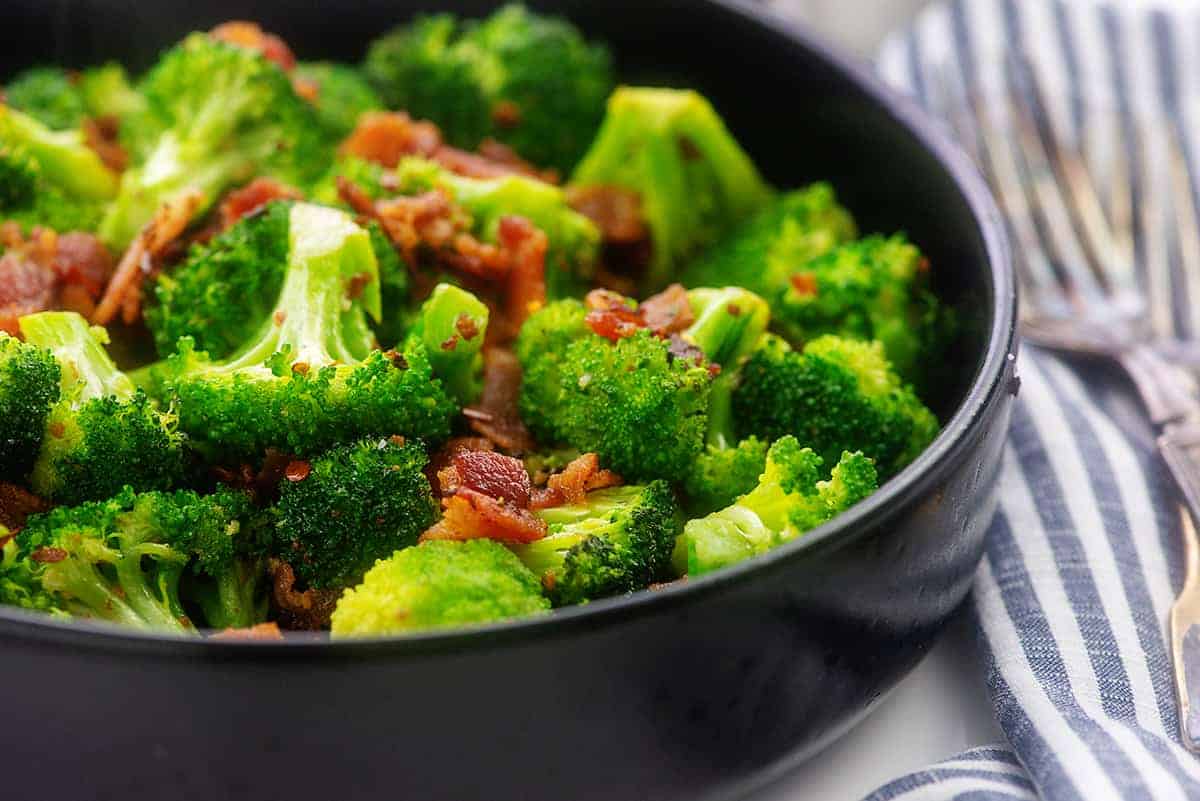
- Steaming or Boiling Broccoli: Steaming or boiling broccoli helps retain its vibrant green color and crisp texture. Season with salt, pepper, olive oil, and lemon juice for a simple side dish.
- Roasting Broccoli: Roasting broccoli brings out its natural sweetness and creates a delicious caramelized flavor. Toss with olive oil, garlic, and your choice of spices, then roast in the oven until tender and slightly charred.
- Broccoli in Recipes: Broccoli can be used as a main ingredient in soups, quiches, and casseroles. Its mild flavor blends well with other ingredients, allowing it to be easily incorporated into a wide range of dishes.
- Sautéed Broccoli: Sautéing broccoli with olive oil, lemon, garlic, and red pepper flakes creates a light, healthy side dish or delicious addition to pastas, bowls, and more.
Whether you’re a fan of traditional recipes or enjoy experimenting with new flavors, broccoli can be a delicious and nutritious addition to your culinary repertoire.
Nutritional Benefits of Consuming Broccoli Regularly
Broccoli is a powerhouse vegetable that offers a wide range of nutritional benefits when consumed regularly. Packed with essential vitamins, minerals, and antioxidants, this cruciferous vegetable promotes overall health and well-being.
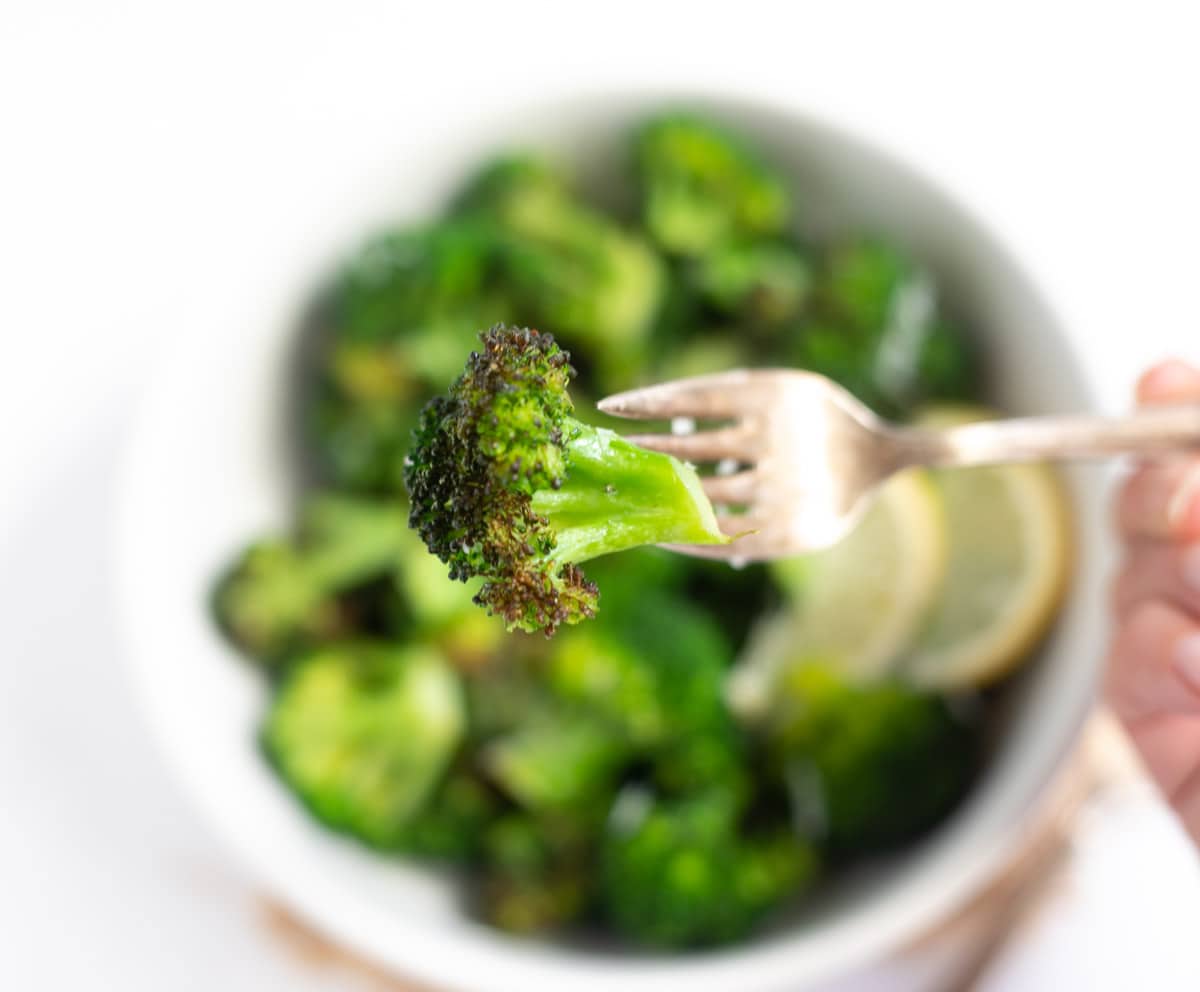
Rich in Vitamin C:
- Broccoli is a significant source of vitamin C, an essential nutrient for immune function and collagen production.
- Just one cup of broccoli provides over 100% of the recommended daily intake of vitamin C, making it beneficial for boosting immunity.
High in Dietary Fiber:
- Broccoli is an excellent source of dietary fiber, which aids in digestion and helps maintain a healthy weight.
- The fiber content in broccoli promotes satiety, making it a valuable component of a balanced diet.
Packed with Antioxidants:
- Broccoli contains potent antioxidants like sulforaphane, known for its anticancer properties.
- Studies suggest that regular consumption of broccoli may reduce the risk of certain cancers, including breast, prostate, and colorectal cancer.
- The high levels of antioxidants in broccoli also contribute to protection against chronic diseases such as heart disease and diabetes.
With its impressive nutritional profile, including vitamins, minerals, and antioxidants, incorporating broccoli into your regular diet can significantly contribute to your overall health and well-being.
Frequently Encountered Challenges in Growing Broccoli
Growing broccoli can be a rewarding experience for any gardening enthusiast. However, like any plant, broccoli is not exempt from several challenges that can hinder its growth and overall success.
- Pests and Diseases Challenges:
- Broccoli plants face challenges from pests and diseases during growth.
- Common pests include aphids, caterpillars, and flea beetles.
- Pests can cause damage to leaves and stems, leading to stunted growth and reduced yield.
- Diseases like black rot, clubroot, and downy mildew also affect broccoli plants, impacting their health and productivity.
- Preventative Measures:
- Implement crop rotation to minimize pest and disease buildup in the soil.
- Maintain garden hygiene by removing plant debris and weeds, which can harbor pests and diseases.
- Use organic insecticides and fungicides when necessary, following manufacturer instructions.
- Regularly inspect plants for signs of infestation or disease to enable early detection and intervention.
By being proactive in pest and disease management, gardeners can overcome these challenges and enjoy a thriving broccoli harvest.
Tips for Growing Organic Broccoli
Organic gardening offers a sustainable and eco-friendly approach to growing broccoli without the use of synthetic pesticides and fertilizers. Here are some tips to help you successfully grow organic broccoli in your garden.
1. Soil preparation: Start by ensuring your soil is well-drained and rich in organic matter. Add compost or well-rotted manure to improve soil fertility and structure. Conduct a soil test to determine the pH level and adjust it to the ideal range of 6.0 to 7.0 using organic amendments if needed.
2. Companion planting: Consider using companion plants to naturally deter pests and promote healthier growth. Broccoli thrives when planted alongside aromatic herbs like basil, dill, and rosemary, which can repel common pests such as cabbage worms and aphids. Additionally, planting broccoli near marigold flowers can help reduce nematode populations that can harm the roots of the plants.
By implementing these organic gardening practices, you can enjoy the nutritional benefits of homegrown broccoli while minimizing harm to the environment and promoting a healthier ecosystem in your garden. Give these tips a try and get ready to harvest delicious and organic broccoli heads right from your backyard.
Watch video for more information:
fAQ
Can I grow broccoli in a small backyard garden?
Yes, you can grow broccoli in a small backyard garden as long as it receives adequate sunlight and has well-drained soil.
Is it necessary to start broccoli seeds indoors before transplanting them outside?
Starting broccoli seeds indoors can help ensure a longer growing season, but it is not necessary. You can directly sow the seeds in the garden as well.
How often should I water my broccoli plants?
Broccoli plants require consistent moisture, so it’s important to water them regularly, about 1-1.5 inches per week. Adjust watering frequency based on weather conditions.
What are some common pests and diseases that affect broccoli plants?
Common pests include aphids, cabbage worms, and flea beetles. Diseases such as clubroot and downy mildew can also affect broccoli. Proper care and monitoring can help manage these issues.
When is the best time to harvest broccoli heads?
Broccoli heads are typically ready for harvest when they are firm and tightly closed. Harvest them before they start to yellow or flower.
How can I extend the broccoli growing season?
You can extend the broccoli growing season by planting early-maturing and late-maturing varieties. Additionally, providing shade during hot summer months can help prolong the harvest.
What is the best way to store broccoli for later use?
To store broccoli, wrap it in a damp paper towel and place it in a perforated plastic bag in the refrigerator. It can stay fresh for up to a week.
Can I freeze broccoli for long-term preservation?
Yes, you can freeze broccoli for long-term preservation. Blanch the florets in boiling water for a few minutes, then plunge them into ice water before freezing in airtight containers.
Apart from cooking, how else can I use broccoli?
Broccoli can be used in salads, stir-fries, soups, and even juiced. You can also incorporate it into smoothies or make broccoli slaw.
What are some nutritional benefits of consuming broccoli regularly?
Broccoli is rich in fiber, vitamins (C, K, and A), minerals (iron and potassium), and antioxidants. It is also known for its potential cancer-fighting properties.
What are some challenges I may face when growing organic broccoli?
Some challenges in growing organic broccoli include managing pests and diseases without synthetic pesticides, maintaining soil fertility naturally, and dealing with unpredictable weather conditions.
Are there any specific tips for growing organic broccoli?
Yes, some tips for growing organic broccoli include using organic fertilizers, practicing crop rotation to avoid soil-borne diseases, and encouraging beneficial insects to control pests naturally.

Studied Agricultural Engineering-Plant Protection at University of California, Davis.
Head of Content writing team at Southelmontehydroponics.com

